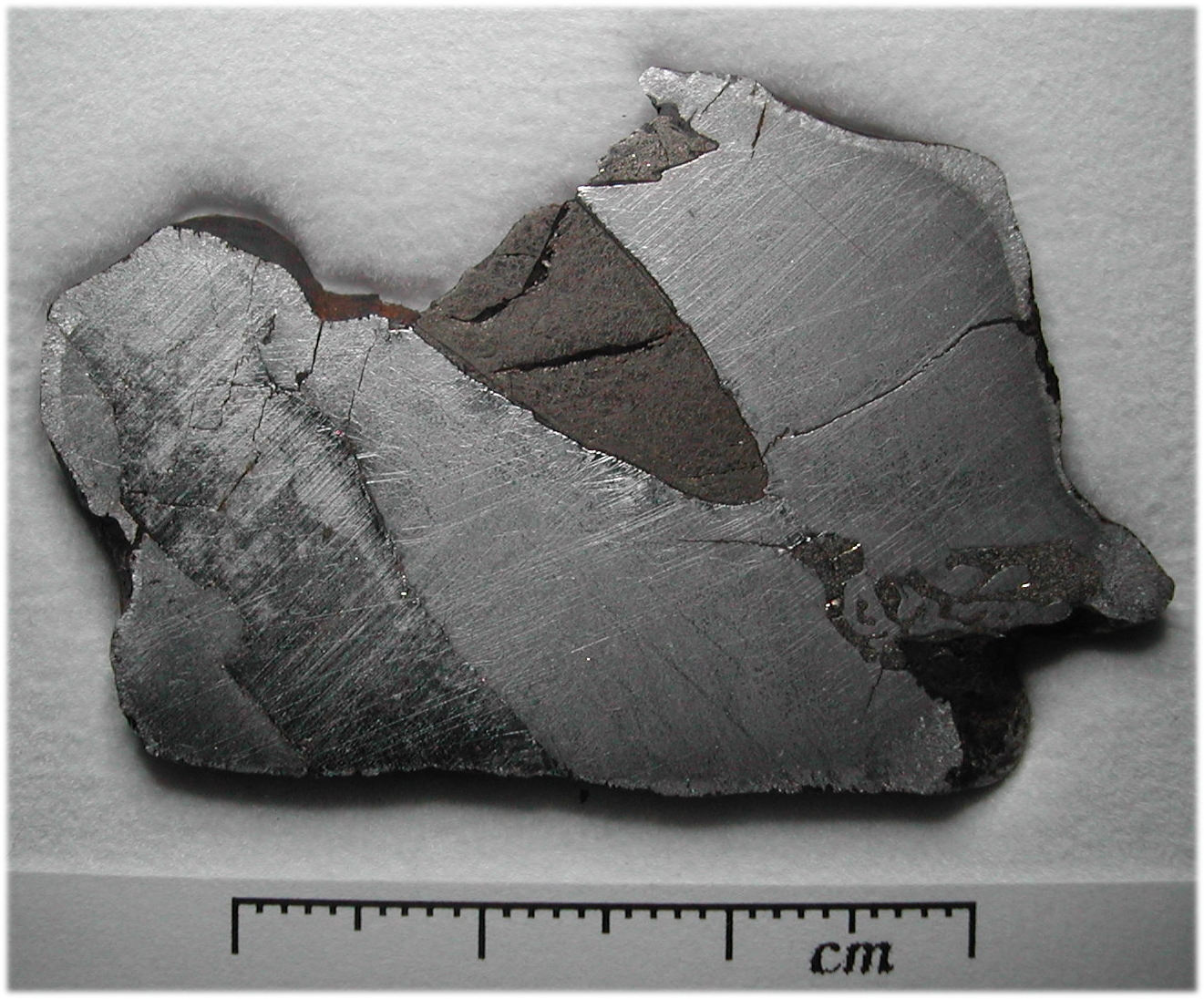Neumann lines on:
[Wikipedia]
[Google]
[Amazon]
 Neumann lines, or Neumann bands, are fine patterns of parallel lines seen in cross-sections of many hexahedrite
Neumann lines, or Neumann bands, are fine patterns of parallel lines seen in cross-sections of many hexahedrite
 Neumann lines, or Neumann bands, are fine patterns of parallel lines seen in cross-sections of many hexahedrite
Neumann lines, or Neumann bands, are fine patterns of parallel lines seen in cross-sections of many hexahedrite iron meteorite
Iron meteorites, also called siderites or ferrous meteorites, are a type of meteorite that consist overwhelmingly of an iron–nickel alloy known as meteoric iron that usually consists of two mineral phases: kamacite and taenite. Most iron me ...
s in the kamacite phase, although they may appear also in octahedrites provided the kamacite phase is about 30 micrometres wide. They can be seen after a polished meteorite cross-section is treated with acid. The lines are indicative of a shock-induced deformation of the kamacite crystal, and are thought to be due to impact events on the parent body of the meteorite
A meteorite is a rock (geology), rock that originated in outer space and has fallen to the surface of a planet or Natural satellite, moon. When the original object enters the atmosphere, various factors such as friction, pressure, and chemical ...
.
Neumann lines are named after who discovered them in 1848 in the hexahedrite meteorite which had fallen near Braunau (present-day Broumov, Czech Republic
The Czech Republic, also known as Czechia, and historically known as Bohemia, is a landlocked country in Central Europe. The country is bordered by Austria to the south, Germany to the west, Poland to the northeast, and Slovakia to the south ...
) in 1847.J. G. Burke: Cosmic Debris, Meteorites in History. University of California Press, 1986.
See also
* Glossary of meteoritics *Widmanstätten pattern
Widmanstätten patterns (), also known as Thomson structures, are figures of long Phase (matter), phases of nickel–iron, found in the octahedrite shapes of iron meteorite crystals and some pallasites.
Iron meteorites are very often formed ...
References
{{Meteorites Meteorite mineralogy and petrology